Spiral and rotary
Spiral staircases have a vertical axis around which the steps are arranged in a spiral. This allows you to save space, and the structure, despite all its reliability, is light and airy.
Metal is usually used as a material, less often wood. In order not to have to suffer with smooth curves, spiral staircases with a rotary bowstring are built.
The screw principle allows you to spend a tiny piece of free space on arranging the riser – 135×135 cm, and if you make the rack inclined or modular, you can fit on 1 square meter.
Rotary staircases with winder steps are also compact, but they take up a little more space – 160×180 cm. When moving along them, a person turns 90 or 180 degrees. Such structures are safer than spiral ones, and it is more convenient to go up and down them.

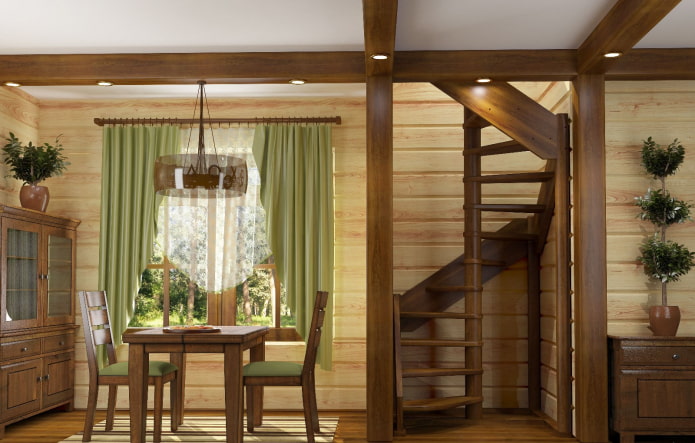
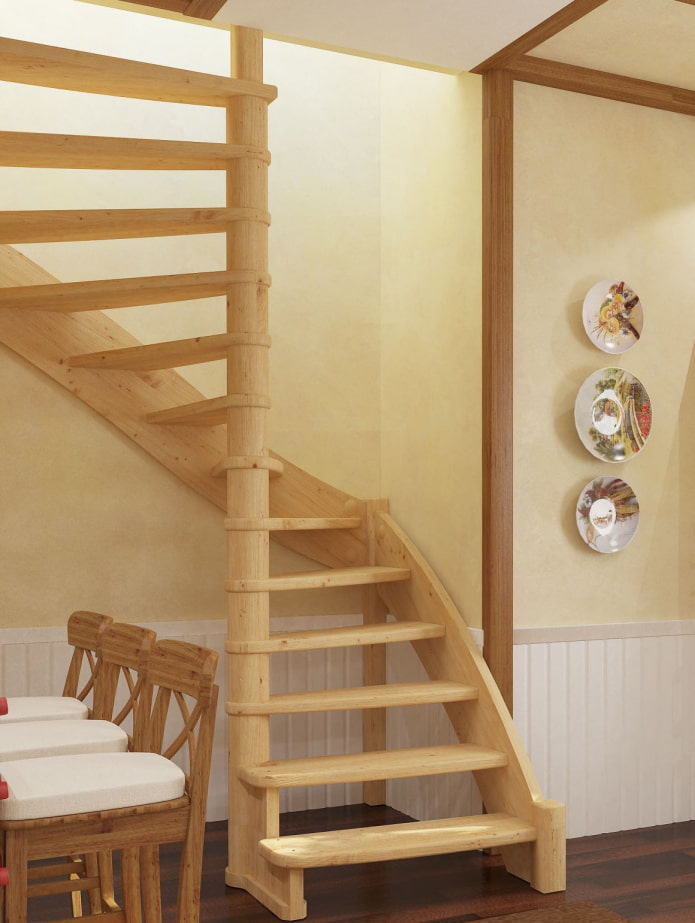
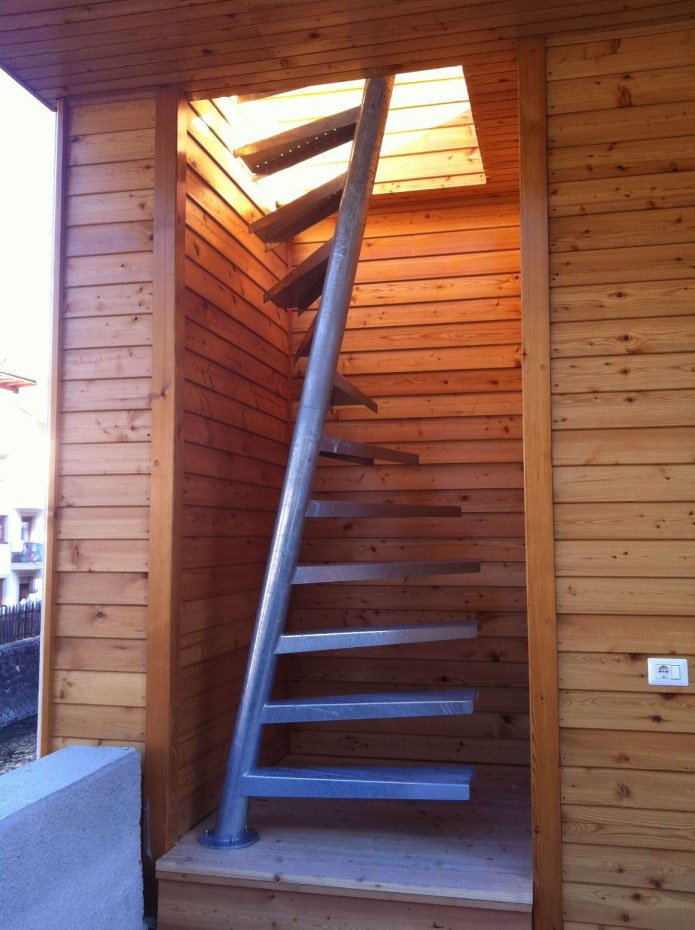
Folding and attached
Such ladders are also called attic or mansard. The idea is that there is a hatch in the ceiling, opening which a person lowers a folding, retractable or folding module of steps and railings, climbs up, and hides it back upon returning, so not a centimeter of precious space is wasted on the lower floor. This is ideal for a small dacha.
The staircase does not necessarily have to fold and “go” to the upper floor. You can use a stepladder on wheels and put it behind a door or closet after use – this way you won’t lose much space either.
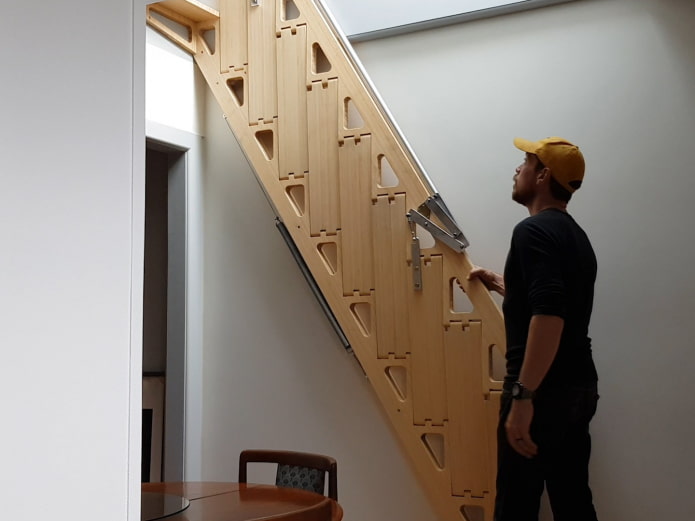
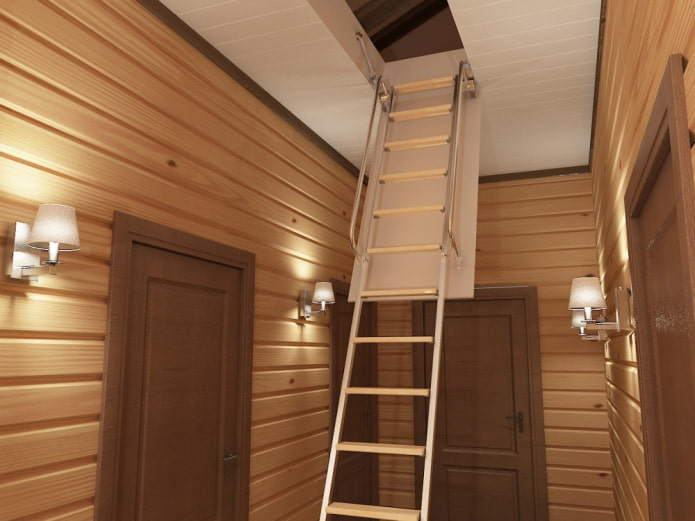
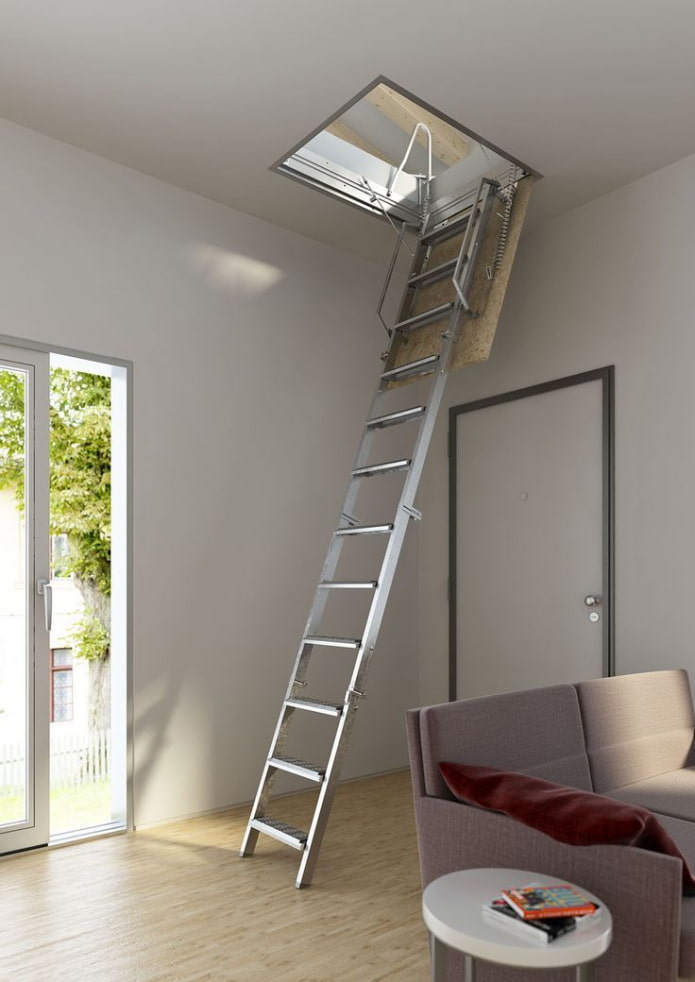
“Goose step”
A classic one- or two-flight staircase does not always fit in a small dacha, then the “goose” or “duck step” principle comes to the rescue. This model has a steep slope of 60-80 degrees, an unusual ratio of the tread width to the riser height, and a special shape of the steps – they have notches.
To comfortably move along such a staircase, you will have to get the hang of it and follow the strict order of placing your feet, which is laid down by the design.
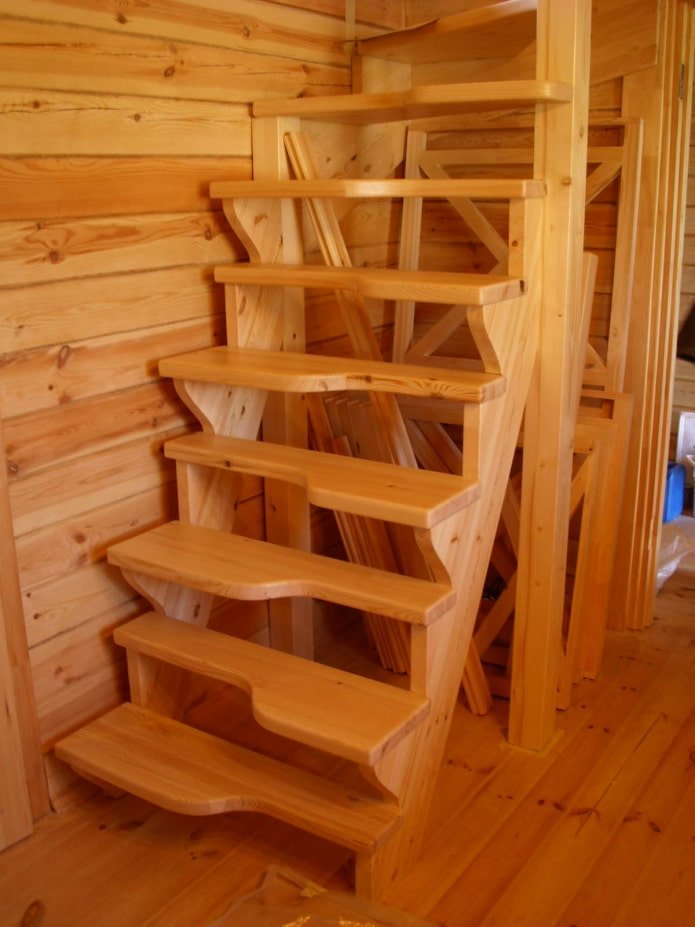
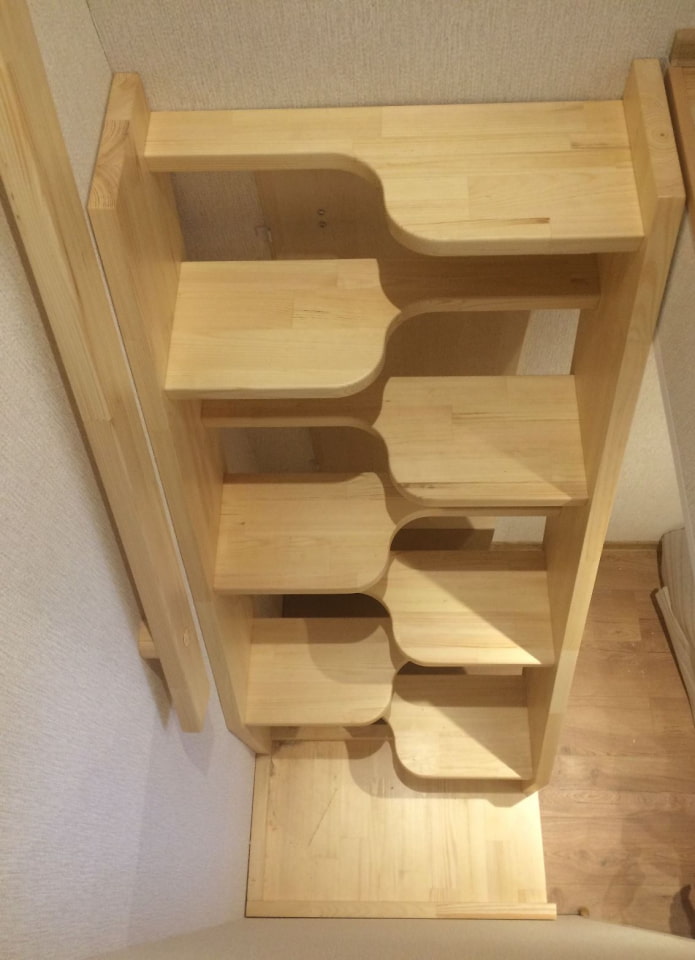
From logs and saw cuts
Having dealt with the optimal arrangement of stairs for a small dacha, let’s move on to materials and appearance. Many owners of modest country estates in our country prefer to build houses from wood and also use wood in interior decoration. To emphasize the warmth and color of a wooden interior, you can install an original staircase made of logs or saw cuts.
A solid log can act as a base, and saw cuts or small logs can replace the steps.
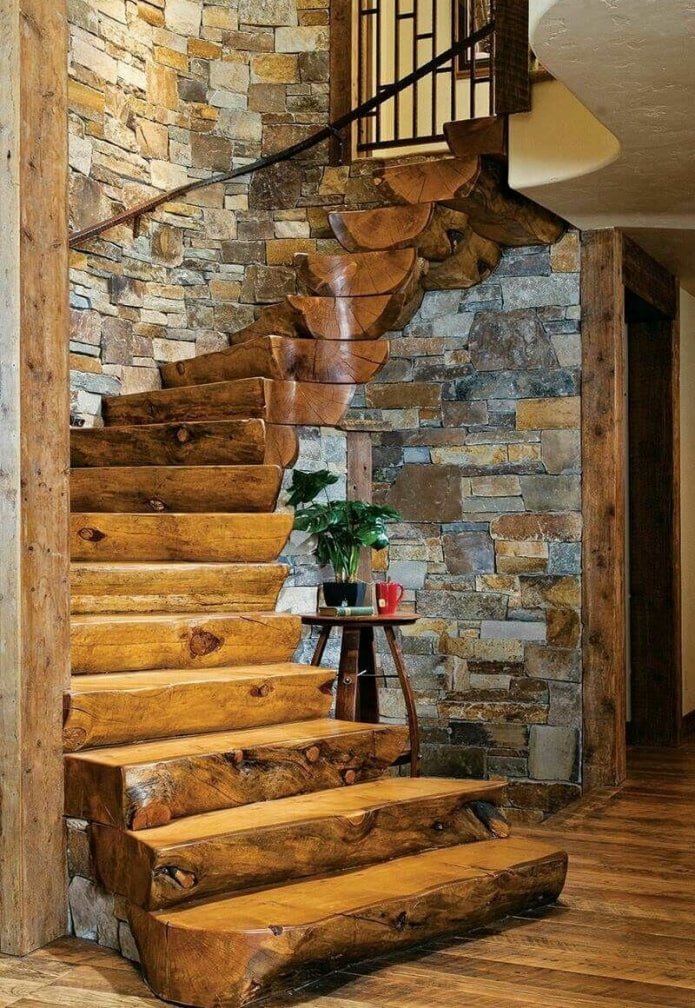
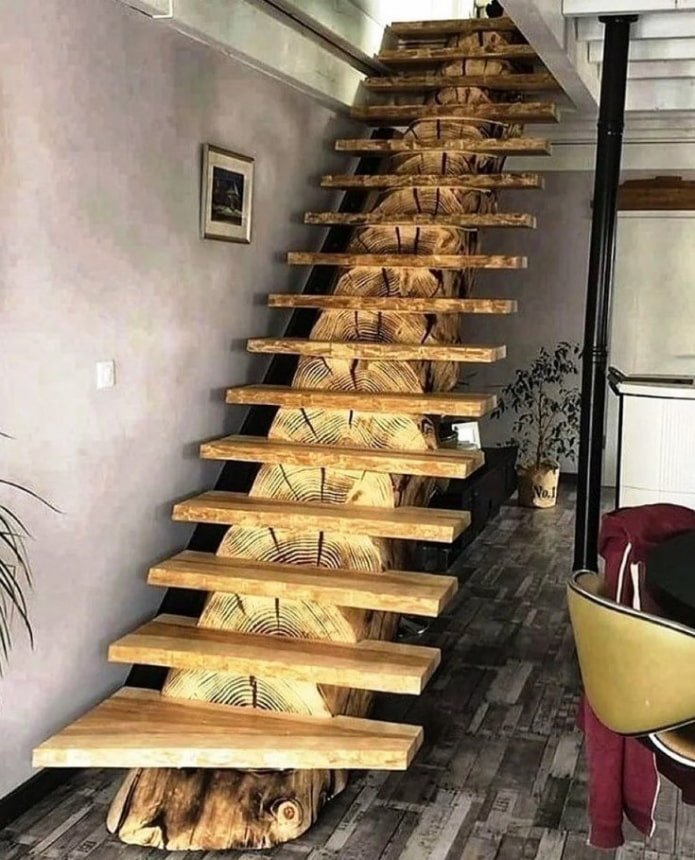
With shelves and racks
In a small dacha, you want to use the usable space maximum, so why not equip the stairs to the second floor with the simplest storage system? Instead of risers, have bookshelves, and in the under-stairs space, a rack where you can store many things besides books.
The racks under the stairs play not only a utilitarian, but also a decorative role. Arrange the shelves asymmetrically, fill them with photo frames, figurines, potted houseplants, and your interior will be transformed.
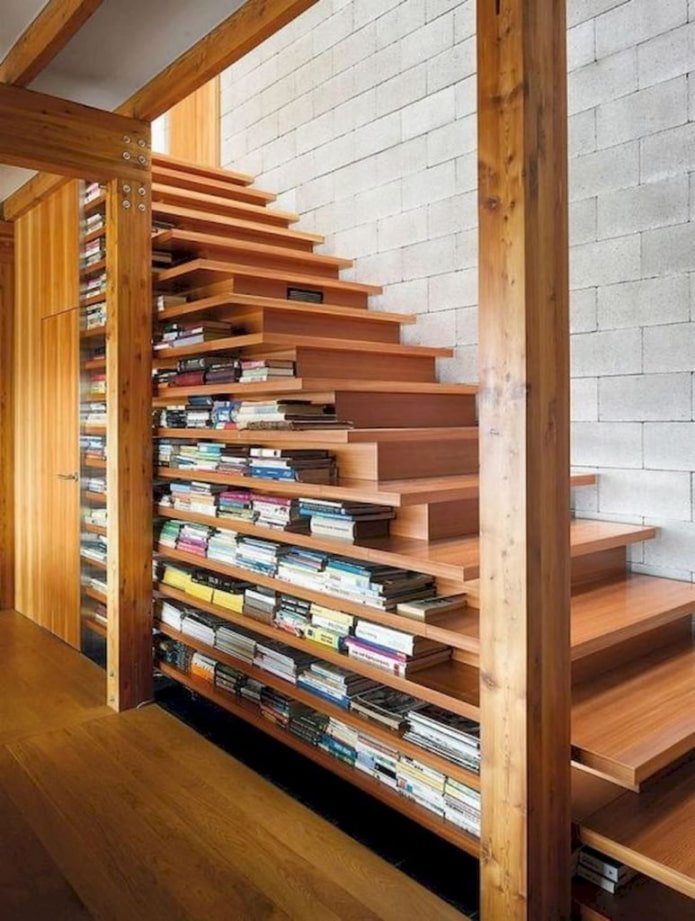
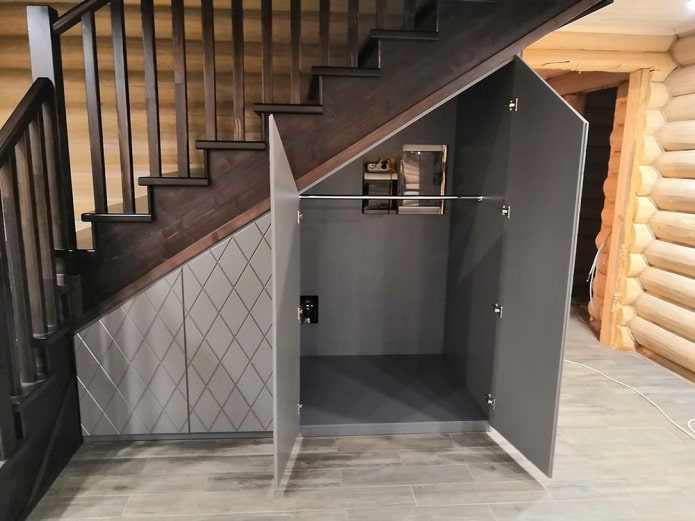
With forged railings
Not everyone likes simplicity and economy, someone wants to make their small dacha elegant and respectable. For this, you can use artistic forging, which will ennoble even a small staircase without overloading it. If, of course, you choose an unpretentious pattern.
Forged railings look harmonious in combination with any steps, including wooden ones. Add some openwork metal elements to the interior – lamps, candlesticks, flower stands – and the picture will be complete.
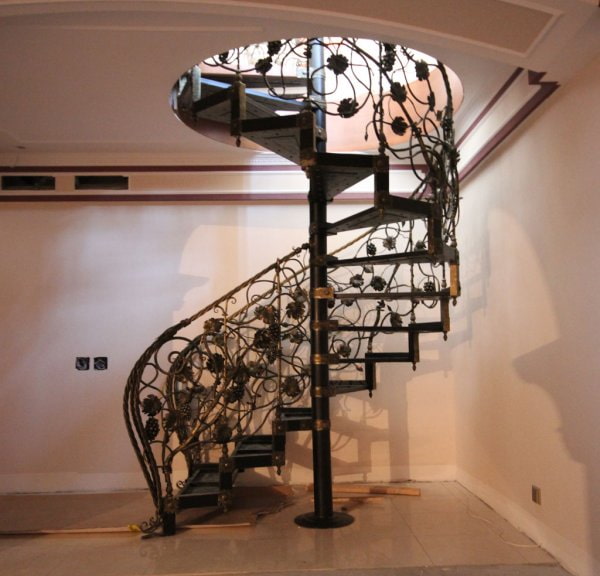
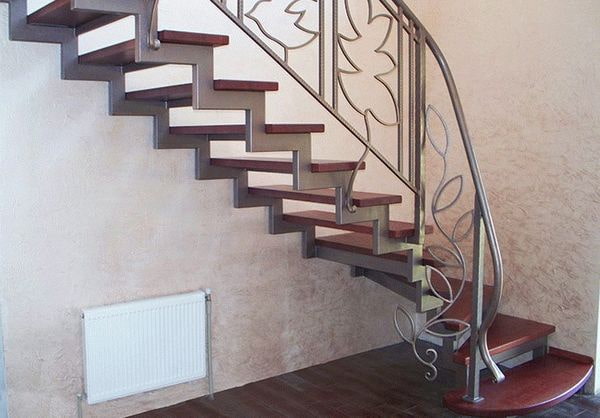
With wood carving
A less expensive, but no less effective way to ennoble a wooden staircase is to use carving. This technique is usually used to decorate railings and balusters. The finished work is covered with stain and varnish if they want to preserve and emphasize the beauty of natural wood, or painted if the interior design requires it.
Carving can be used to decorate not only balusters and railings, but even risers ― while on the first floor, you can admire the pattern.
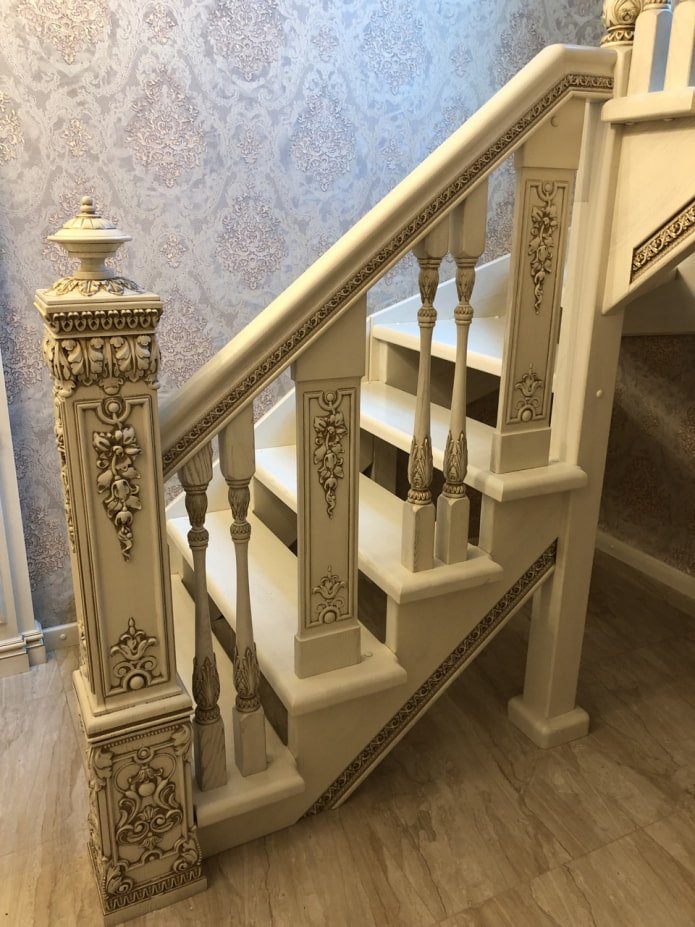
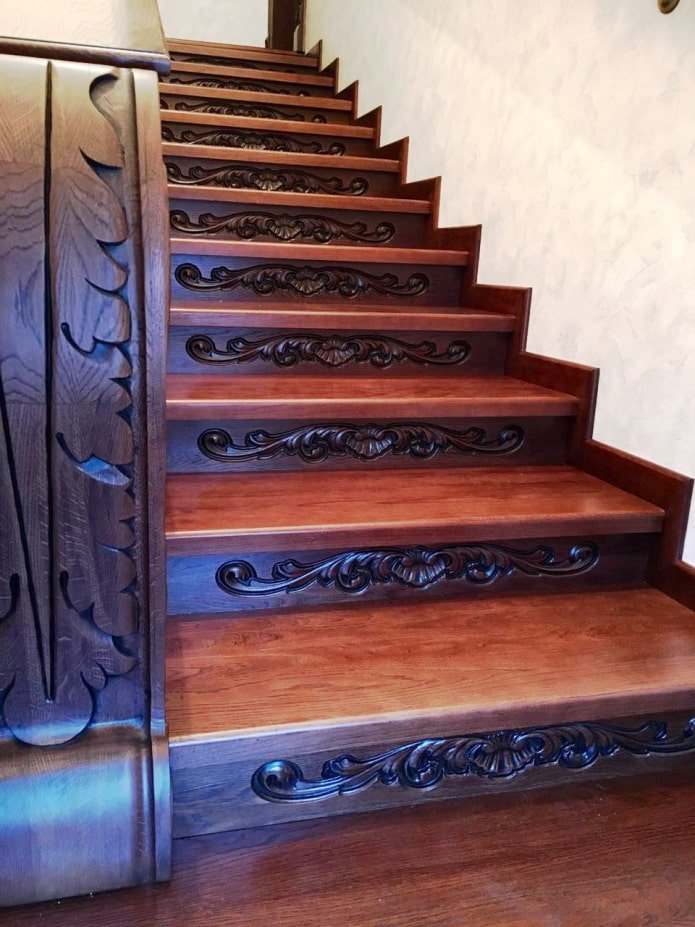
With tiles and mosaics
In The modest provincial interiors of small summer cottages are surprisingly well suited to bright tiles and mosaics. It can be laid not only on walls and floors – let it decorate your stairs.
The mosaic pattern will look good both on the steps and under them, but it is better to choose one option so that there is no effect of variegation and merging.
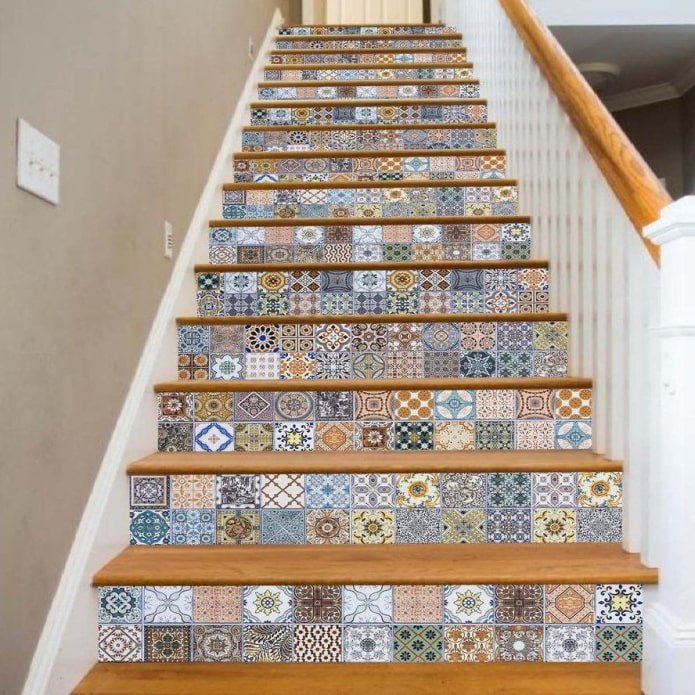
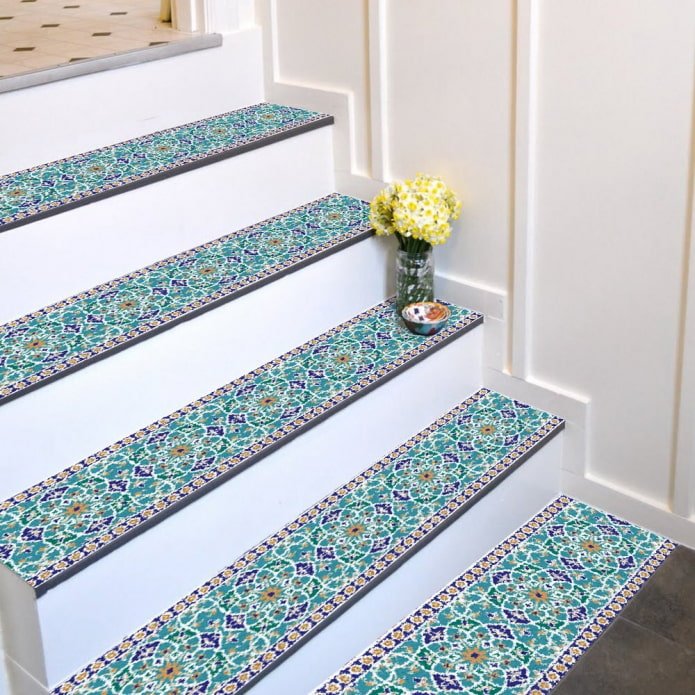
With carpet
By laying carpet on the stairs, you You will kill three birds with one stone: decorate it, make it soft and warm for your feet and safe in terms of the risk of slipping. This is especially relevant for summer residents with small children and elderly relatives.
You can stuff textile pads onto the steps, buying them in a store or making them yourself from an old rug, or you can lay out a carpet runner.
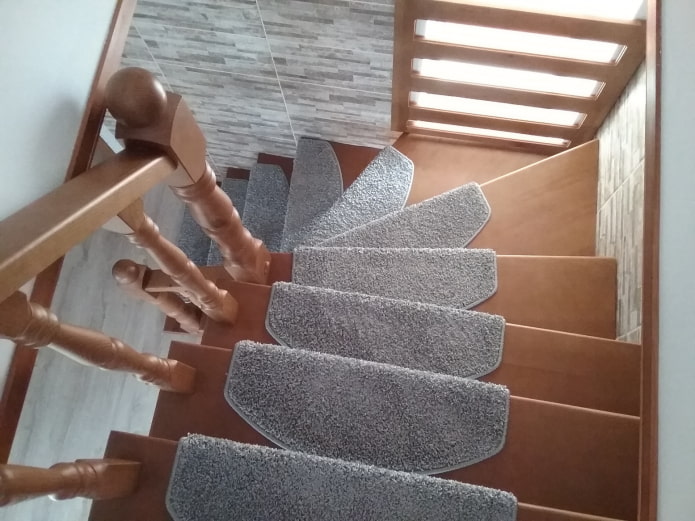
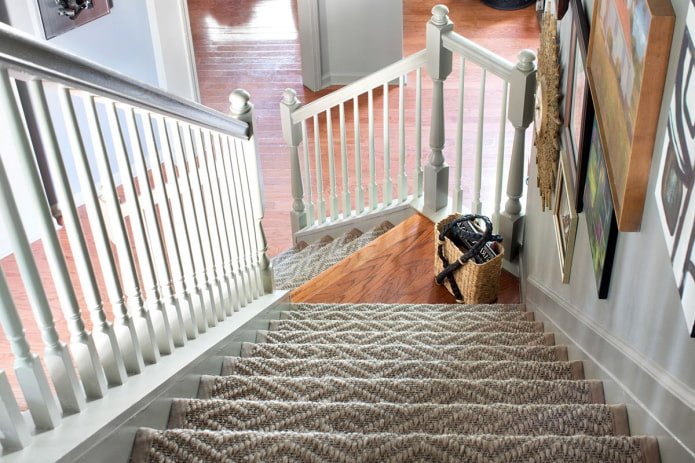
With plants
Another interesting option for using the space under the stairs is organizing winter garden. Create a picturesque composition from large floor pots or boxes, and hang smaller containers on hooks directly to the steps. Spot lighting will complement the ensemble and make life easier for flowers.
It is not necessary to decorate the stairs with troublesome live plants. Artificial flowers twining around the railings also look decent.
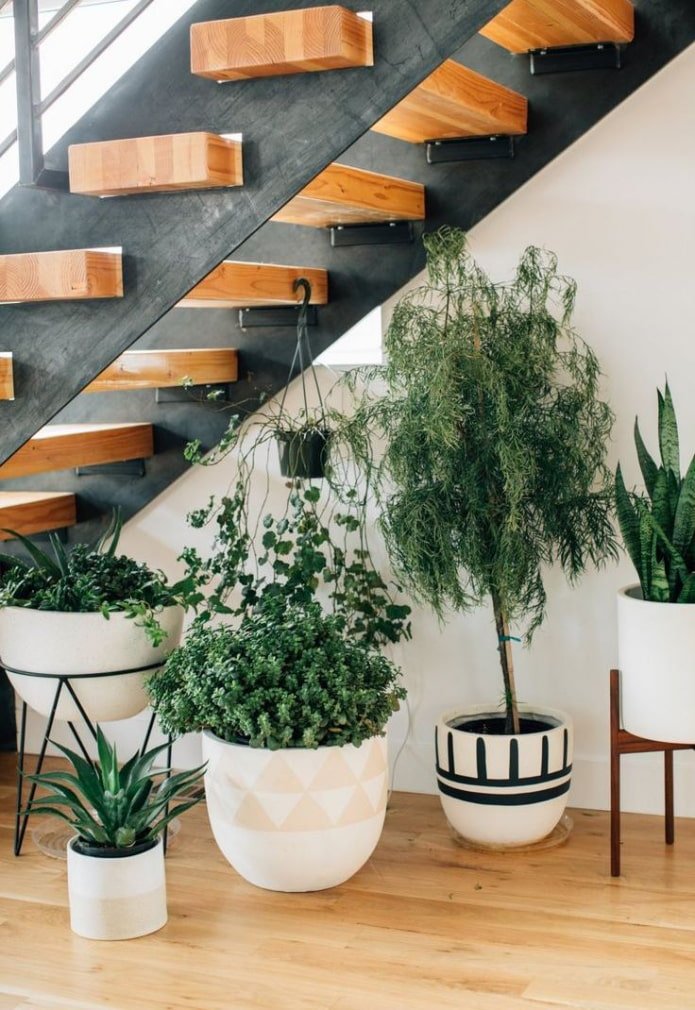
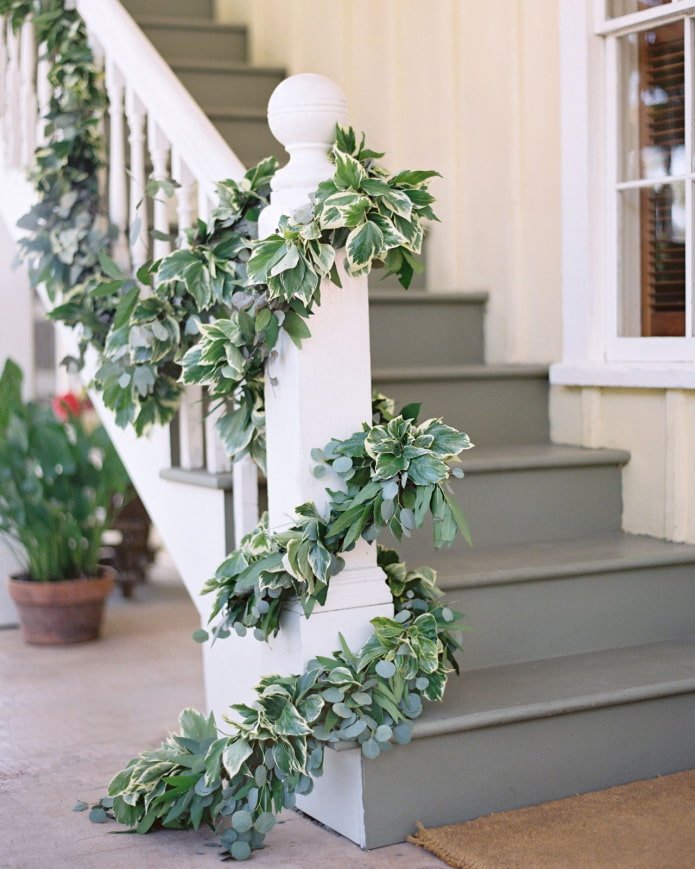
Now reading:
- Sleek Kitchen Interiors: 30 Real Photos and Design Solutions
- Top 10 Garage Flooring Materials: Which One to Choose?
- Why are foundation vents necessary and should they be closed in winter?
- Exploring the Ford EcoSport: Compact SUV Excellence
- 12 Effective Methods for Sealing Gaps in Wood Floors with Step-by-Step Instructions.